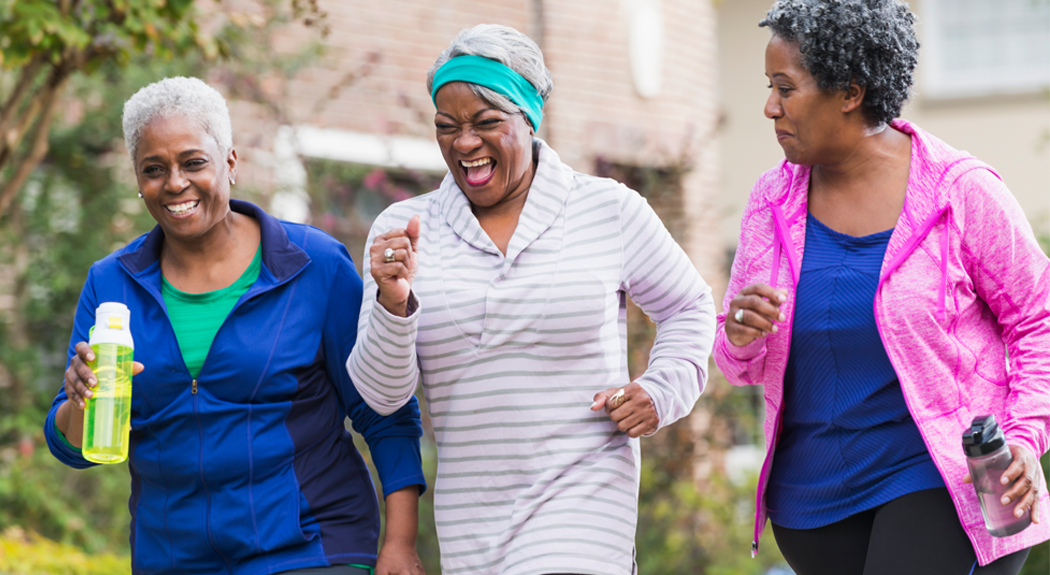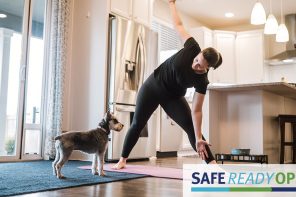You may not realize it, but your bones are in a constant state of regeneration. Your body naturally replaces old bone with new. But by the time you reach your mid-30s, you begin to lose more bone than your body can replace and then menopause speeds this process up. Over time this leads to thinner, weaker bones and the potential for developing osteoporosis.
One in two women over age 50 will have an osteoporosis-related fracture in her lifetime. It’s important that you go for bone scans to measure bone loss, as well as incorporate lifestyle habits that can slow down the weakening of bones. Ultimately, this helps reduce your risk of fractures.
A bone density test called DEXA (dual-energy x-ray absorptiometry) can diagnose osteoporosis. A DEXA scan uses very little radiation and produces detailed information about your bone density by comparing data from two X-rays operating at different frequencies. Information is collected and compared to a reference group to determine your bone mineral density.
“The bone density from the DEXA scan helps your radiologist determine your T-score, which we use to diagnose osteoporosis,” says John Park, MD, a radiologist with Anne Arundel Diagnostics Imaging. “A T-score of -2.5 or lower indicates you have osteoporosis.”
You should talk to your doctor if you’ve gone through menopause or if you have any of the following risk factors:
- Low physical activity
- Low body weight
- Smoke
- Drink too much alcohol
- Heavy caffeine use
- Have a diet low in calcium and vitamin D
- Previous fracture, especially after age 50
- Menopause before age 45
- Take certain medicines, for example long-term use of corticosteroids
- Family history of osteoporosis
There’s also a Fracture Risk Assessment Tool (FRAX®) for evaluating fracture risk. Using the results of the DEXA scan, a FRAX score can be given to estimate the risk of a fracture within 10 years.
Unfortunately, many women don’t get screened. Even if they have a fragility fracture, many don’t realize that’s a sign they may have osteoporosis.
“A bone fracture is not unlike a heart attack — they are both a sign that something is wrong. In the case of a fracture, it could mean you have osteoporosis or a weaker form of bone loss called osteopenia,” says Christina Morganti, MD, orthopedic surgeon and medical director of the Osteoporosis Program at Anne Arundel Medical Center Orthopedics.
Bones shouldn’t break with low-energy falls such as from standing height or less. When they do, your doctor may want to run blood and bone density tests to determine if you have osteoporosis. If diagnosed, you should learn about weight-bearing exercise, fall prevention, nutrition and medication options for healthy bones.
You can improve your bone health and reduce your risk of fragility fractures by doing the following:
- Pay attention to your calcium intake. Try to get 1,200 mg of calcium a day, preferably from food. If you don’t get enough from food, add a 500-600 mg calcium pill.
- Get enough vitamin D. Many people benefit from a supplement of 800-1,000 iu per day.
- Incorporate weight-bearing exercise into your lifestyle. Try walking 30 minutes a day. Plus, lift weights two or three days per week when cleared by your doctor.
- Evaluate your home. Throw rugs, slippery surfaces and poorly lit hallways can lead to falls and then fractures.
- Get your eyes checked. If your sight is impaired, your chance of falling is higher.
- Eliminate vices. Alcohol and tobacco are two common vices that are detrimental to your bone health.
- Educate yourself. There are many good resources on the web, including the National Osteoporosis Foundation: nof.org.
 Christina Morganti, MD, is an orthopedic surgeon and medical director of the Osteoporosis Program at Anne Arundel Medical Center Orthopedics.
Christina Morganti, MD, is an orthopedic surgeon and medical director of the Osteoporosis Program at Anne Arundel Medical Center Orthopedics. John S. Park, MD, is a radiologist at Anne Arundel Medical Center.
John S. Park, MD, is a radiologist at Anne Arundel Medical Center.




